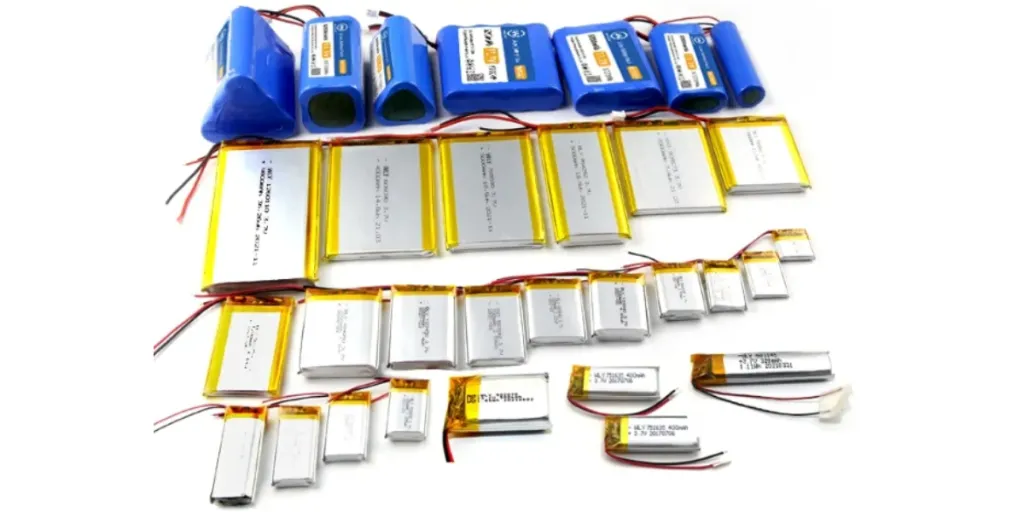LiPo batteries, known for their light weight and flexibility in shape and size, are rapidly gaining favor in a variety of industries. These batteries consist of a gel-like electrolyte that allows for thinner designs. From powering sleek consumer electronics to enhancing the operation of drones and remotely controlled vehicles, lithium polymer batteries are a versatile option.
This article will provide a brief introduction to lithium-polymer batteries and then explore the key factors that will determine the choice of lithium-polymer batteries in 2024, including their financial viability, technological advances and suitable application scenarios.
Table of Contents
What is a LiPo battery?
Composition
Classification
Application scenarios
What to consider when choosing a LiPo battery?
Technology trends
The bottom line
What is a LiPo Battery?
Lithium-ion polymer batteries (LiPo batteries) are an advanced type of rechargeable battery based on lithium-ion technology, but using a solid polymer electrolyte instead of a liquid electrolyte compared to traditional lithium batteries. This modification gives LiPo batteries significant advantages in terms of weight, size, shape flexibility, and safety.
The thinness and lightness of LiPo batteries make them ideal for use in electronic devices that require small size and lightweight, such as radio-controlled toys, drones, portable electronic devices, and some mobile devices. Their design flexibility means that they can be manufactured in a variety of shapes and sizes to meet the needs of specific applications, which is difficult to achieve with other types of batteries.
LiPo batteries are also characterized by high energy density, high discharge capability, and longer charge cycle life compared to other batteries, making them particularly popular for applications that require high current output and long-term use. However, LiPo batteries still require extra care in their use and maintenance. Improper charging and over-discharging can lead to battery damage and even safety incidents such as fire and explosion.
Therefore, LiPo batteries must be used with a dedicated charger and should be charged under supervision. In addition, proper storage conditions are also crucial, and batteries should be avoided from being exposed to extreme temperatures or physical damage in order to prolong their service life and ensure safe use.
LiPo batteries have become an indispensable energy solution in modern electronic devices due to their excellent performance and flexibility, but they also require users to pay attention to maintenance procedures to ensure safety and efficiency.
Composition
Lithium polymer (LiPo) batteries are similar in composition to conventional lithium-ion batteries, but they use a different electrolyte material. The key components of a LiPo battery include a positive electrode (cathode), a negative electrode (anode), a separator, an electrolyte, and an external package. The following is a detailed description of these components:
Cathode
The cathode is usually made of lithium metal oxides, such as lithium cobalt oxide (LiCoO2) and lithium iron phosphate (LiFePO4), which determines the voltage and capacity of the battery. The choice of anode material affects the performance, stability, and cost of the battery.
Anode
Negative electrodes are generally made of carbon materials, most commonly graphite. During charging, lithium ions move from the positive electrode to the negative electrode and become embedded therein; during discharging, lithium ions move back to the positive electrode. The material and structure of the anode is critical to storing more lithium ions, providing high current output, and long cycle life.
Separator
The separator is a thin, porous membrane that separates the positive and negative electrodes to prevent short circuits while allowing lithium ions to pass through. The materials used for the separator need to have good chemical stability and mechanical strength to ensure safety and stability during battery operation.
Electrolyte
Unlike the liquid electrolyte of conventional lithium-ion batteries, LiPo batteries use a solid or gel-like polymer electrolyte. This electrolyte can be a solid polymer film or a polymer gel containing lithium salts. The polymer electrolyte supports the transport of lithium ions while providing better safety and allowing the battery to be made into different shapes.
External encapsulation
The external encapsulation of LiPo batteries is usually a flexible, thin and lightweight plastic film. This encapsulation not only reduces the weight of the battery, but also allows the battery to be fabricated into a variety of shapes to suit the needs of different devices.
Classification
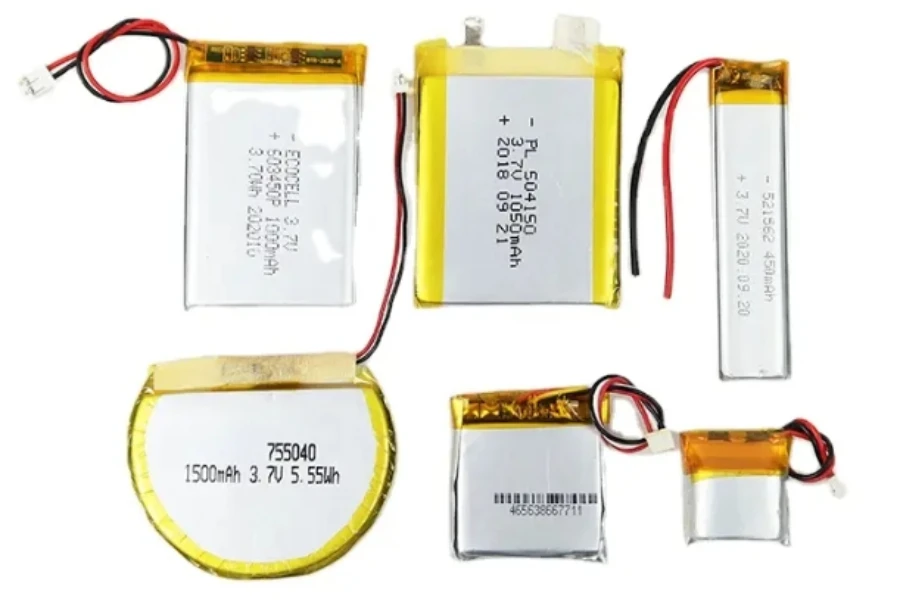
Lithium polymer (LiPo) batteries are categorized based on factors such as their shell material, electrolyte type, capacity, discharge rate, and application area. The following are some of the common ways of categorization:
Categorized by electrolyte type
Solid polymer electrolyte LiPo batteries: Using solid polymer as the electrolyte, these batteries are safer and less prone to leakage, but their conductivity may not be as good as that of liquid electrolyte batteries.
Gel polymer electrolyte LiPo battery: Using gel type polymer electrolyte, this battery combines the safety of solid electrolyte and the high conductivity of liquid electrolyte.
Categorized by shell material
Soft case LiPo battery: uses a flexible plastic film or aluminum-plastic composite film as the shell, which can be made into various shapes and sizes and is suitable for devices that require customized shapes.
Hard shell LiPo batteries: using hard materials (such as plastic or metal) as the shell, the shape and size of the more standardized, suitable for general-purpose devices that do not require high battery shape.
Categorized by capacity
The capacity of LiPo batteries is usually expressed in milliampere-hour (mAh), and different capacities are suitable for different scales of energy demand:
Small capacity LiPo batteries: less than 1000mAh, suitable for small portable devices, such as Bluetooth headsets and smart bracelets.
Medium capacity LiPo batteries: between 1000mAh and 5000mAh, commonly found in smartphones and tablets.
Large-capacity LiPo batteries: more than 5000mAh, suitable for devices that need to be powered for a long time, such as laptops and drones.
Categorized by discharge rate (C-Rate)
The discharge rate determines how fast the battery releases electrical energy. LiPo batteries with high discharge rate are suitable for applications with high power requirements:
Low discharge rate battery: Generally used for common electronic devices, such as cell phones and laptops, with a discharge rate between 1C and 5C.
High discharge rate batteries: suitable for devices that require fast and large discharges, such as RC cars and drones, where the discharge rate can reach over 20C.
Categorized by application areas
LiPo batteries for consumer electronics: suitable for smartphones, tablet PCs and other consumer electronics products.
LiPo batteries for portable power supplies and power tools: used in portable power supplies, power tools and other devices that require high energy output.
Application scenarios
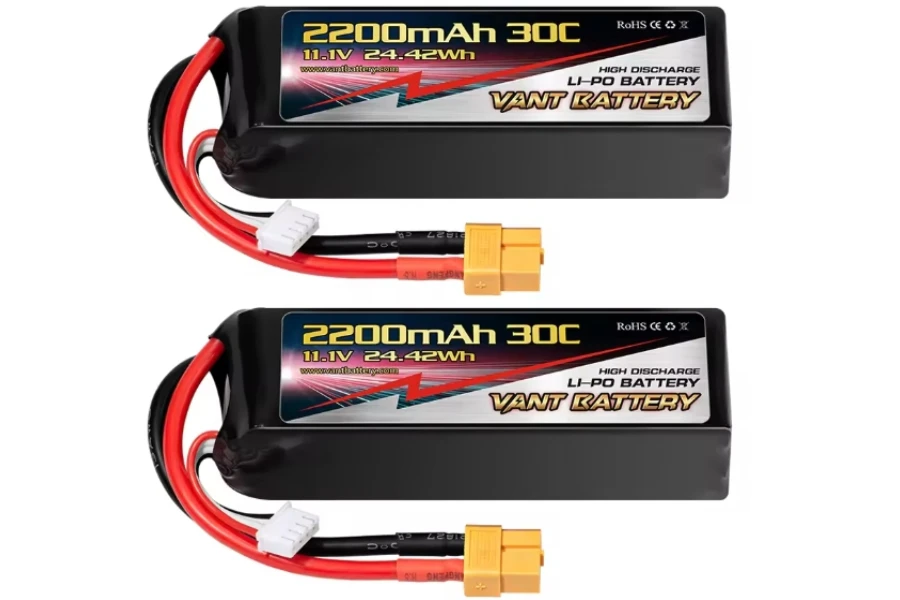
Lithium polymer (LiPo) batteries have found a wide range of applications in several fields due to their thinness, high energy density and customized shape. Below are some of the main application scenarios of LiPo batteries and their detailed descriptions:
Mobile communication devices
LiPo batteries are ideal energy solutions for smartphones, tablets, portable music players and other personal electronic devices. Not only do they provide the long-lasting power support needed, but their thin and lightweight nature makes the devices more portable and meets modern consumer demand for thin and light electronics.
Wearable technology
Wearable devices such as smartwatches, health monitoring devices, and virtual reality headsets often utilize LiPo batteries due to their specific battery shape and weight requirements, and the customizable shape of LiPo batteries allows them to fit into a wide range of compact and non-standard product designs while providing adequate power support.
Portable power and emergency power
LiPo batteries are also used in portable power banks, emergency power systems and other portable charging solutions. These devices often require high-capacity batteries to charge multiple devices, and LiPo batteries fulfill this need with their high energy density.
Power tools
Cordless power tools, such as drills, chainsaws, and lawnmowers, require high output currents to power powerful motors. LiPo batteries not only provide this high-power output, but are also lighter than other types of batteries, making the tools easier to carry and use.
Medical equipment
Portable medical devices and monitoring systems, including blood glucose monitors, portable electrocardiogram (ECG) monitors, and remote health monitoring devices, also make extensive use of LiPo batteries. In these applications, battery reliability, lightweight and long life are critical.
Electric vehicles
While lithium-ion batteries are more common in electric vehicles (EVs), LiPo batteries are also used in a number of lightweight electric transportation vehicles, such as electric scooters, electric bicycles, and certain specific electric motorcycles. In these cases, LiPo batteries provide an efficient, lightweight power solution.
The popularity of LiPo batteries in these diverse application scenarios is mainly attributed to their high energy density, customizable shape, lightweight, and powerful discharge capability. However, when using LiPo batteries, it is still necessary to pay attention to their safe management and maintenance to ensure the reliable operation of equipment and the safety of users.
What to consider when choosing a LiPo battery?
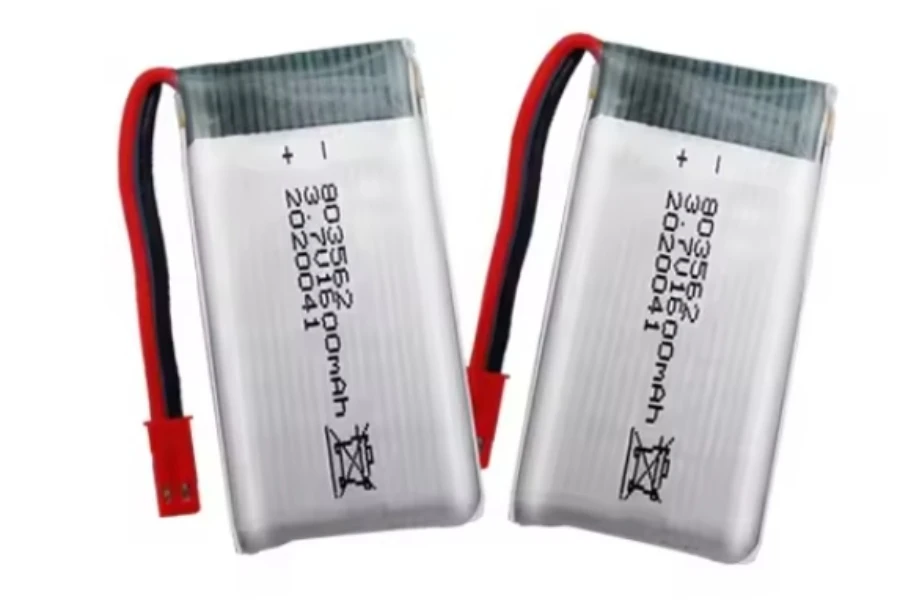
A variety of factors should be considered when selecting lithium polymer (LiPo) batteries to ensure they are appropriate for your specific application and needs. The following are key factors that should be evaluated when considering whether to use LiPo batteries:
Design flexibility
If your product requires a specific shape or size of battery to fit its design, LiPo batteries may be an ideal choice due to their customizable shape and thin, lightweight nature. They can be made in a variety of shapes to fit into compact or non-standard spaces.
Weight sensitive
For applications that require a lightweight solution, such as drones, wearables, or other portable electronics, LiPo batteries offer significant advantages due to their light weight. Lightweight batteries help reduce overall device weight and improve the user experience.
High energy density requirements
LiPo batteries offer high energy density, which means storing more power in a smaller size or lighter weight. LiPo batteries are an excellent choice for applications that require long runtimes or high-power consumption (e.g., power tools or mobile communication devices).
High discharge rate applications
If your device requires a large amount of power to be discharged quickly (e.g., RC models, race cars, etc.), the high discharge rate characteristics of LiPo batteries make them ideal for this type of application. They are capable of delivering high currents for short periods of time to meet high performance requirements.
Cost insensitive
While LiPo batteries offer a number of performance benefits, they typically cost more than other types of batteries such as nickel-metal hydride (NiMH) or conventional li-ion batteries. Therefore, consideration of project budget and cost-effectiveness is an important factor when choosing a battery type.
Technology trends
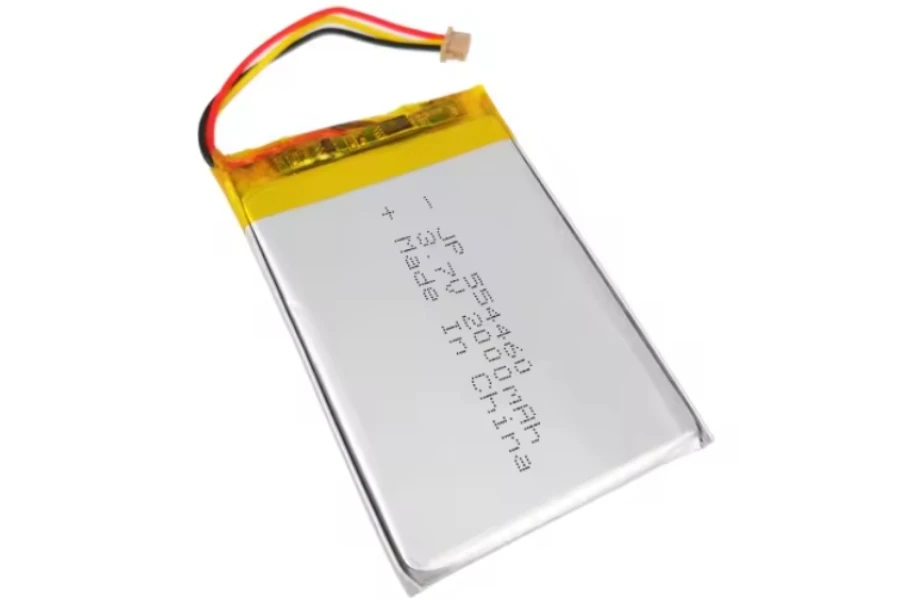
Since its commercialization, lithium polymer battery technology has been progressing and evolving, mainly in terms of performance enhancement, safety enhancement, cost reduction, and environmentally friendly features. Below are some of the key trends in current LiPo battery technology:
Improvements in energy density
Researchers are constantly looking for ways to increase the energy density of LiPo batteries, i.e., to store more power in a smaller volume or lighter weight. This is achieved by improving the chemistry of the battery, optimizing electrode materials and developing more efficient electrolyte systems. Batteries with high energy density can support longer usage times and are particularly suitable for mobile devices and electric vehicles.
Safety enhancement
The safety of LiPo batteries has always been of great concern to users and manufacturers. New technologies and materials are being developed to minimize safety risks caused by overcharging, overheating and physical damage to the battery. For example, the use of more stable electrolyte materials and improved battery management systems (BMS) can effectively prevent the risk of battery fires and explosions.
Cost reduction
The manufacturing cost of LiPo batteries is gradually decreasing as production technology improves and large-scale production advances. This makes LiPo batteries more affordable, paving the way for wider application and popularization. Cost reductions are also facilitating the development of fields such as electric vehicles and renewable energy storage systems.
Solid state battery technology
While solid-state batteries are primarily a type of lithium-ion battery, their development has also had a significant impact on LiPo batteries. Solid-state batteries use solid-state electrolytes instead of liquid or gel electrolytes and are expected to offer greater safety and energy density. The maturation and commercialization of this technology could transform the battery market in the future, including the application areas for LiPo batteries.
The bottom line
Lithium polymer batteries, a specialized form of lithium-ion batteries, are unique due to their solid or gel-like polymer electrolyte. This battery technology is favored for its thin, lightweight, customizable shape and high energy density, and is used in a wide range of applications, from portable electronic devices to electric vehicles.
The high discharge rate characteristics of LiPo batteries make them particularly suitable for power-hungry applications such as drones and RC models. The current development of LiPo battery technology is progressing towards higher efficiency, safety and environmental friendliness, aiming to provide longer life and lower cost. Enhanced safety and lower costs further increase the attractiveness of LiPo batteries.
When choosing a LiPo battery, customers are advised to consider its unique benefits and follow specialized charging and storage guidelines to maximize the benefits of the battery. Finally, if you are interested in purchasing a LiPo battery for your home or business, you can visit this link.
